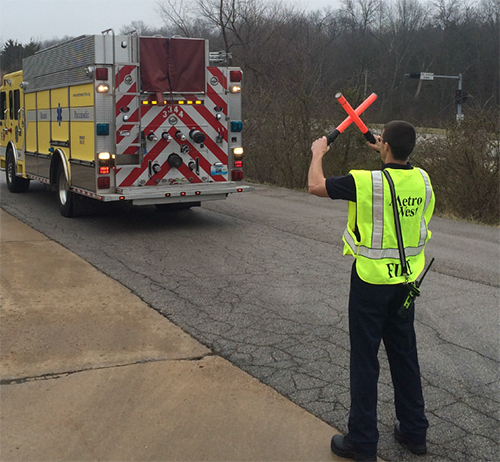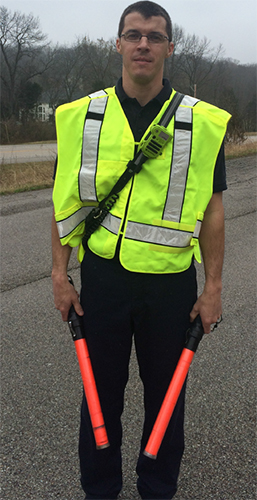
By Brian Zaitz
Roadways are a common operational location for the fire service. Whether it is at a vehicle accident on an interstate, an emergency medical services call in a commercial district, or a residential fire along a neighborhood road, we often find ourselves operating in or near roadways on almost every alarm.
我们常常认为是正常运作,但每年,由于道路事故,许多消防员受到伤害和杀害,其中许多可能被阻止。在巷道上运行时,它必须令人遗憾的是。始终采取必要的预防措施来保护现场,船员和自己。
相关消防员培训
Highway Incident Safety: The Hits Keep Coming!
“D” Drivers and Other Hazards at Highway Operations
The first thing to consider is apparatus placement. We often review and drill on leaving room for the ladder in front of the building or placing the second truck on the C-side, but how often do you review apparatus placement to block a roadway for an accident or the use of cones for scene and traffic safety?
When possible, block the lane or lanes of the accident as well as one additional lane. This provides room for the crews to stage equipment such as rescue tools and stretchers as well as the workspace around the scene. While we are focused on the scene, we must also focus on the traffic. Although many feel this is a police matter (and, to a certain extent, it is), we must be able to function independently in their absence and assist when needed.


In addition, using cones provides early awareness and direction to traffic to merge lanes. When cones are not available or to augment the use of cones, stage staff vehicles “upstream”; this will also provide early awareness and slow traffic as it approaches the scene.
为了您自己的个人安全,始终可见。几乎每个消防队员制服都包括黑色裤子和黑暗衬衫;这不是巷道上午3点最明显的东西。通过穿着轮廓外套,戴着反射背心,或使用手电筒和其他照明装置,让自己可见。
另一个关键组件是无线电。虽然这并不提供任何保护,但如果发生某些事情并且可以向他人提供通信,如果流量模式改变或者由于即将到来,因为由于从车辆即将到来的危险需要疏散,则可以提供与他人的通信。始终确保可以看到和听到。
道路是一个危险的位置。随着司机分心的司机,对于所有工作场景的人来说,伤害或事故的机会增加了。采取必要的预防措施和准备,以确保在这些紧急情况下工作时的安全和知识。
Download this training bulletin as a PDF这里(4.1 MB)
 布莱恩扎伊茨是一个14年的消防服务学生,目前被分配为船长/训练officer with the Metro West (MO) Fire Protection District. Brian is an instructor with Engine House Training, LLC as well as instructor at the St. Louis County Fire Academy. Brian holds several degrees, including an associates in paramedic technology, a bachelors in fire science management, and a masters in human resource development. Brian is currently and accredited chief training officer and student of the National Fire Academy’s Executive Fire Officer Program.
布莱恩扎伊茨是一个14年的消防服务学生,目前被分配为船长/训练officer with the Metro West (MO) Fire Protection District. Brian is an instructor with Engine House Training, LLC as well as instructor at the St. Louis County Fire Academy. Brian holds several degrees, including an associates in paramedic technology, a bachelors in fire science management, and a masters in human resource development. Brian is currently and accredited chief training officer and student of the National Fire Academy’s Executive Fire Officer Program.
更多扔回基础





















